-
 Bitcoin
Bitcoin $83,291.0340
-0.96% -
 Ethereum
Ethereum $1,826.6379
-1.54% -
 Tether USDt
Tether USDt $0.9998
0.00% -
 XRP
XRP $2.0549
-1.26% -
 BNB
BNB $606.8753
1.28% -
 Solana
Solana $119.1310
-4.05% -
 USDC
USDC $1.0000
0.00% -
 Dogecoin
Dogecoin $0.1659
-1.56% -
 Cardano
Cardano $0.6500
-2.57% -
 TRON
TRON $0.2364
-0.34% -
 Toncoin
Toncoin $3.7730
-5.06% -
 UNUS SED LEO
UNUS SED LEO $9.4476
0.65% -
 Chainlink
Chainlink $13.0772
-2.81% -
 Stellar
Stellar $0.2627
-1.16% -
 Avalanche
Avalanche $18.6021
-1.63% -
 Sui
Sui $2.3506
0.90% -
 Shiba Inu
Shiba Inu $0.0...01230
1.04% -
 Hedera
Hedera $0.1637
0.05% -
 Litecoin
Litecoin $83.5759
2.10% -
 Polkadot
Polkadot $4.0229
-0.74% -
 MANTRA
MANTRA $6.3749
2.08% -
 Bitcoin Cash
Bitcoin Cash $303.6743
-0.24% -
 Bitget Token
Bitget Token $4.5449
-0.46% -
 Dai
Dai $1.0000
-0.01% -
 Ethena USDe
Ethena USDe $0.9997
-0.01% -
 Pi
Pi $0.6435
-7.05% -
 Hyperliquid
Hyperliquid $12.2904
-5.52% -
 Monero
Monero $214.8078
-0.76% -
 Uniswap
Uniswap $6.0066
-0.82% -
 Aptos
Aptos $5.2560
0.22%
What is the difference between cold wallets and hot wallets of blockchain digital currency?
Hot wallets offer easy online access but are less secure than offline cold wallets, which prioritize security over convenience; the best choice depends on individual needs and risk tolerance.
Mar 21, 2025 at 07:56 pm
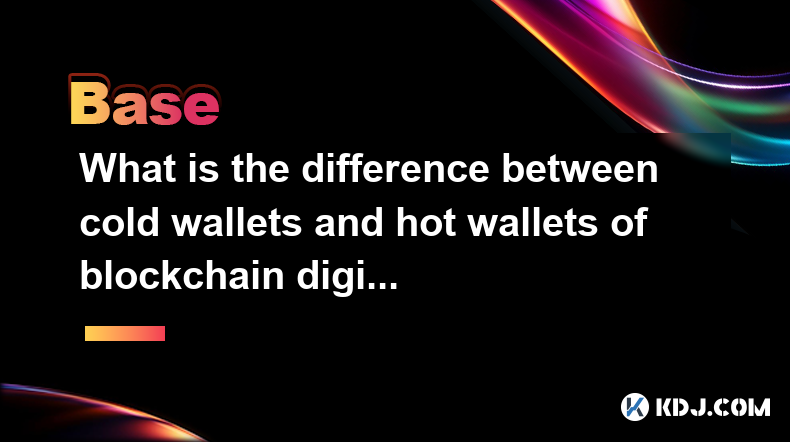
Key Points:
- Accessibility: Hot wallets are online and easily accessible, while cold wallets are offline and require more effort to access. This directly impacts security and convenience.
- Security: Cold wallets are significantly more secure due to their offline nature, making them less vulnerable to hacking and malware. Hot wallets, being online, face higher risks.
- Convenience: Hot wallets offer ease of use and quick transaction processing. Cold wallets are less convenient but provide a higher level of security.
- Types: Both hot and cold wallets come in various forms, including hardware, software, and paper wallets, each with its own set of pros and cons.
- Use Cases: The choice between hot and cold wallets depends on individual needs and risk tolerance. High-value holdings typically warrant cold storage, while smaller amounts may be safely held in a secure hot wallet.
What is the difference between cold wallets and hot wallets of blockchain digital currency? This question delves into the core of cryptocurrency security and accessibility. The fundamental distinction lies in their connection to the internet. Hot wallets are connected to the internet, offering convenience but sacrificing security. Cold wallets, conversely, are offline, prioritizing security over ease of access. This core difference dictates their respective advantages and disadvantages.
Let's explore hot wallets first. Hot wallets are online wallets, constantly connected to the internet. This allows for quick and easy access to your cryptocurrency. Popular examples include web wallets offered by exchanges or software wallets installed on your computer or smartphone. The convenience is undeniable, making them ideal for frequent traders. However, this constant internet connection exposes them to various online threats like hacking, malware, and phishing attacks. The security risks associated with hot wallets are substantial and must be carefully considered.
Now, let's examine cold wallets. Cold wallets are offline storage solutions for your cryptocurrency. This crucial difference significantly reduces the risk of theft or loss due to online vulnerabilities. The most common type is a hardware wallet, a physical device that stores your private keys securely. Other examples include paper wallets, where your private keys are printed on paper, and air-gapped computers used solely for cryptocurrency transactions. The security provided by cold wallets is paramount, especially for significant cryptocurrency holdings.
The choice between a hot and cold wallet depends largely on your individual needs and risk tolerance. If you frequently trade cryptocurrency and need quick access to your funds, a hot wallet might be suitable, provided you implement robust security measures such as two-factor authentication and strong passwords. However, if you prioritize security and are holding a substantial amount of cryptocurrency, a cold wallet is the recommended option. Consider the potential risks and rewards before making your decision.
Let's delve into the specific types of hot and cold wallets. Hot wallets encompass web wallets, mobile wallets, and desktop wallets. Web wallets are provided by cryptocurrency exchanges or online services, offering easy access but posing higher security risks. Mobile wallets are apps on smartphones or tablets, convenient but susceptible to device theft or malware. Desktop wallets are software installed on your computer, offering a balance of convenience and security.
Cold wallets include hardware wallets and paper wallets. Hardware wallets are physical devices resembling USB drives, offering robust security and protection against online threats. Paper wallets are printed documents containing your public and private keys. While offering excellent security, they are vulnerable to physical damage or loss. Choosing the right type of wallet requires understanding your own security needs and technical capabilities.
Security is paramount when dealing with cryptocurrency. Hot wallets require diligent security practices, including strong passwords, two-factor authentication, and regular software updates. Be cautious of phishing scams and malicious websites. Regularly back up your wallet data and consider using a reputable antivirus program. For cold wallets, physical security is key. Store your hardware wallets securely and protect your paper wallets from damage or theft.
Transaction speed is another key difference. Hot wallets offer near-instantaneous transactions, making them ideal for frequent trading. Cold wallets, due to their offline nature, require more steps to initiate a transaction, leading to slower processing times. This trade-off between speed and security is central to choosing the appropriate storage solution for your cryptocurrency.
Managing multiple wallets is also a consideration. Many users opt for a combination of hot and cold wallets. They might keep a small amount of cryptocurrency in a hot wallet for frequent transactions, while the bulk of their holdings remain securely stored in a cold wallet. This strategy balances convenience and security, allowing for flexibility and risk mitigation.
The accessibility of each wallet type differs greatly. Hot wallets are readily accessible anytime, anywhere, with an internet connection. Cold wallets, however, require deliberate action to access funds. This difference highlights the trade-off between ease of use and security. The level of technical expertise needed also varies. Some hot wallets are user-friendly, while cold wallets may require a higher level of technical understanding.
The cost associated with each wallet type also varies. Many hot wallets are free to use, while some hardware cold wallets involve an upfront purchase cost. However, the long-term security benefits of a cold wallet often outweigh the initial investment, especially for significant cryptocurrency holdings. Consider the cost-benefit ratio when making your decision.
Frequently Asked Questions:
Q: Are hot wallets completely insecure?
A: No, hot wallets aren't inherently insecure. With robust security measures like strong passwords, two-factor authentication, and reputable providers, the risk can be mitigated, but it remains higher than with cold storage.
Q: Can I lose my cryptocurrency if I use a cold wallet?
A: Yes, you can lose your cryptocurrency even with a cold wallet. Physical damage or loss of the hardware or paper wallet, forgetting your seed phrase, or a compromised seed phrase during creation are all potential risks.
Q: Which wallet type is best for beginners?
A: For beginners, a reputable hot wallet with strong security features might be easier to use, but they should prioritize learning about secure practices and consider transitioning to a cold wallet as their holdings grow.
Q: What is a seed phrase, and why is it important?
A: A seed phrase (or recovery phrase) is a set of words that acts as a backup for your cryptocurrency wallet. If you lose access to your wallet, the seed phrase allows you to restore it and access your funds. It's crucial to keep it safe and secure, offline, as anyone with it can control your cryptocurrency.
Q: What are the risks associated with paper wallets?
A: Paper wallets are vulnerable to physical damage, theft, or loss. They are also susceptible to being compromised if the printing process or storage isn't completely secure. It's recommended to use them only for small amounts and store them with utmost care.
Disclaimer:info@kdj.com
The information provided is not trading advice. kdj.com does not assume any responsibility for any investments made based on the information provided in this article. Cryptocurrencies are highly volatile and it is highly recommended that you invest with caution after thorough research!
If you believe that the content used on this website infringes your copyright, please contact us immediately (info@kdj.com) and we will delete it promptly.
- Bitcoin (BTC) price falls four per cent after Donald Trump imposes tariffs on trading partners worldwide
- 2025-04-03 14:25:13
- Ethereum Price Fails to Maintain Gains
- 2025-04-03 14:25:13
- Justin Sun, Founder of Tron, Steps in to Rescue TrueUSD (TUSD) from a $456M Reserve Crisis
- 2025-04-03 14:20:12
- Meme Coins Are Exploding, Here's Why They're So Appealing
- 2025-04-03 14:20:12
- Qubetics ($TICS): The Best 100x Crypto for Real Utility and ROI
- 2025-04-03 14:15:12
- Ethereum Faces Tough Market Conditions
- 2025-04-03 14:15:12
Related knowledge
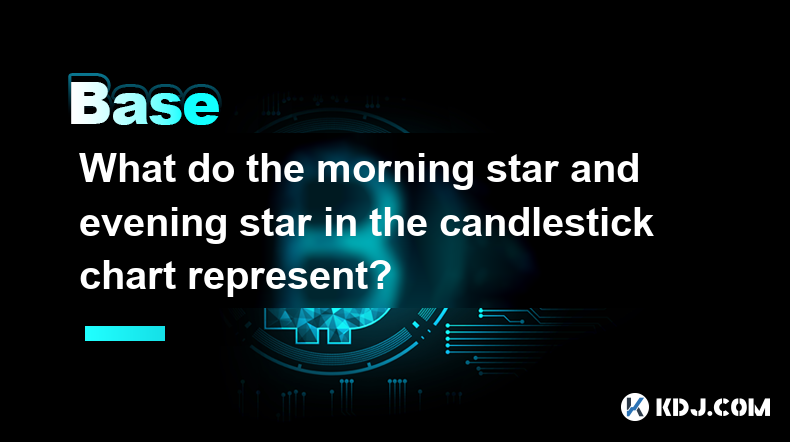
What do the morning and dusk stars in the candlestick chart represent?
Apr 03,2025 at 03:11pm
In cryptocurrency trading, the K-line chart is an important tool for analyzing market trends and price movements. Among them, 'Morning Star' and 'Evening Star' are two important reversal patterns, which represent the key signals of the market's shift from a bear market to a bull market and from a bull market to a bear market, respect...
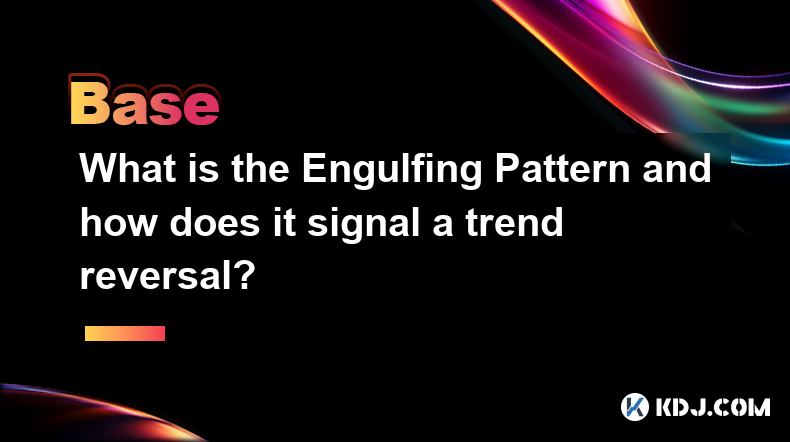
What is the swallowing form? How does it predict a trend reversal?
Apr 03,2025 at 03:07pm
In cryptocurrency trading, technical analysis is one of the important tools traders use to predict market trends and make trading decisions. Among them, the Engulfing Pattern is a common K-line pattern. When it appears on the chart, it is usually considered a signal of a trend reversal. This article will explore in detail what the engulfing pattern is a...
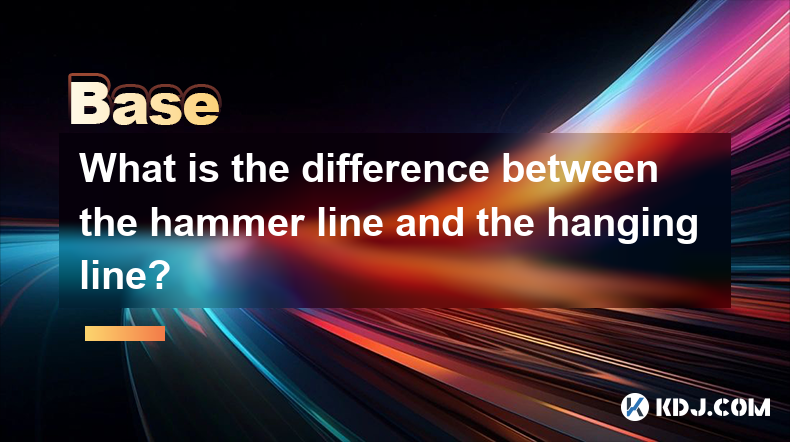
What is the difference between the hammer line and the hanging line?
Apr 03,2025 at 03:03pm
The hammer line and the 'hanging line' pattern are common K-line patterns in technical analysis. They are very similar in appearance, but there are significant differences in the market environment and the predicted market trend. This article will explore the differences between these two forms in detail and help readers better understand and use them f...
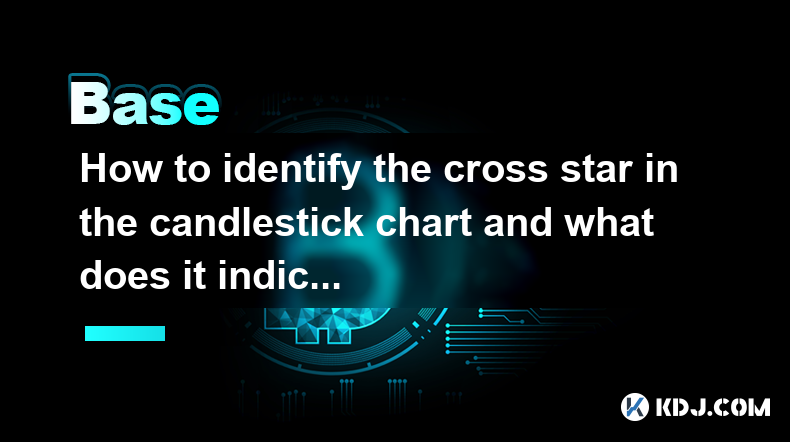
How to identify the cross star in the candle chart and what does it mean?
Apr 03,2025 at 02:57pm
In cryptocurrency trading, the K-line chart is one of the important tools to analyze market trends and price movements. Among them, 'Cross Star' is a common K-line pattern, which is of great significance in analyzing market sentiment and predicting price trends. This article will introduce in detail how to identify the 'cross star' in th...
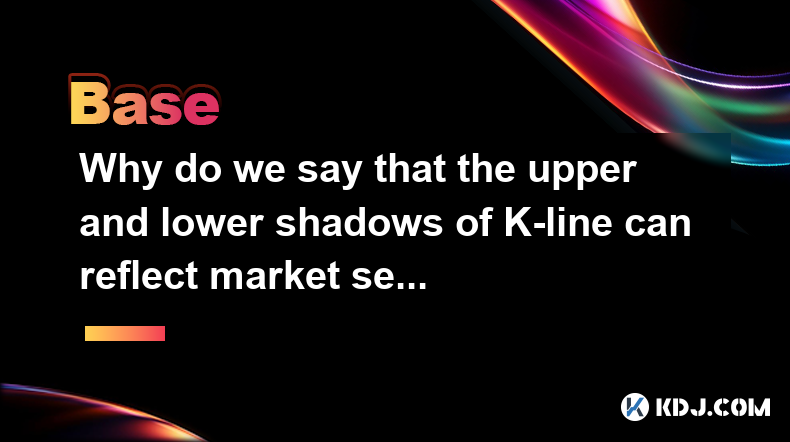
Why do the upper and lower shadows of the K-line reflect market sentiment?
Apr 03,2025 at 02:53pm
The K-line chart is one of the most commonly used tools in technical analysis, and the upper and lower shadows can intuitively reflect the market's long and short emotions and the psychological state of traders. By carefully observing and analyzing the upper and lower shadows of the K-line, investors can better understand market dynamics and make sm...

What are positive and negative lines? What is the difference between them?
Apr 03,2025 at 02:47pm
In the cryptocurrency market, the K-line chart is a commonly used technical analysis tool to show price changes. Each 'candle' in the K-line chart represents the price trend over a period of time, among which 'yang line' and 'yin line' are two key concepts. Understanding them is essential to analyzing market trends and making trading decisions. What is ...

What do the morning and dusk stars in the candlestick chart represent?
Apr 03,2025 at 03:11pm
In cryptocurrency trading, the K-line chart is an important tool for analyzing market trends and price movements. Among them, 'Morning Star' and 'Evening Star' are two important reversal patterns, which represent the key signals of the market's shift from a bear market to a bull market and from a bull market to a bear market, respect...

What is the swallowing form? How does it predict a trend reversal?
Apr 03,2025 at 03:07pm
In cryptocurrency trading, technical analysis is one of the important tools traders use to predict market trends and make trading decisions. Among them, the Engulfing Pattern is a common K-line pattern. When it appears on the chart, it is usually considered a signal of a trend reversal. This article will explore in detail what the engulfing pattern is a...

What is the difference between the hammer line and the hanging line?
Apr 03,2025 at 03:03pm
The hammer line and the 'hanging line' pattern are common K-line patterns in technical analysis. They are very similar in appearance, but there are significant differences in the market environment and the predicted market trend. This article will explore the differences between these two forms in detail and help readers better understand and use them f...

How to identify the cross star in the candle chart and what does it mean?
Apr 03,2025 at 02:57pm
In cryptocurrency trading, the K-line chart is one of the important tools to analyze market trends and price movements. Among them, 'Cross Star' is a common K-line pattern, which is of great significance in analyzing market sentiment and predicting price trends. This article will introduce in detail how to identify the 'cross star' in th...

Why do the upper and lower shadows of the K-line reflect market sentiment?
Apr 03,2025 at 02:53pm
The K-line chart is one of the most commonly used tools in technical analysis, and the upper and lower shadows can intuitively reflect the market's long and short emotions and the psychological state of traders. By carefully observing and analyzing the upper and lower shadows of the K-line, investors can better understand market dynamics and make sm...

What are positive and negative lines? What is the difference between them?
Apr 03,2025 at 02:47pm
In the cryptocurrency market, the K-line chart is a commonly used technical analysis tool to show price changes. Each 'candle' in the K-line chart represents the price trend over a period of time, among which 'yang line' and 'yin line' are two key concepts. Understanding them is essential to analyzing market trends and making trading decisions. What is ...
See all articles























































































